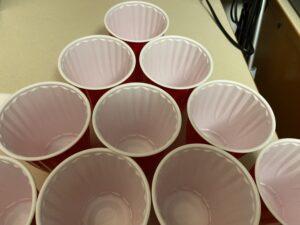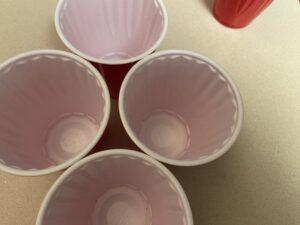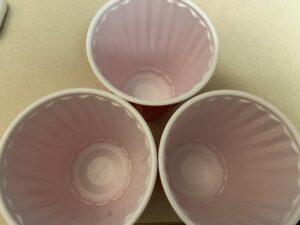Name/Creator/Platform/Rationale
This week, I played water pong, a common drinking game without a formal founder, played primarily across college campuses or at similar party settings. Our initial idea was to combine water pong with truth or dare, so it felt natural to do a competitive analysis on one of our main inspirations.

Theme
In essentially every iteration I’ve seen, the game exists without a theme, although there are some individuals who have made customized boards with designs of their college mascot, favorite music album covers, or other pop culture references. These are nonessential and were not a part of my critical play but something to consider as we begin to add thematic elements to our game.
Mechanics -> Dynamics -> Aesthetics
For this section, we’ll begin by looking at the aesthetics of water pong, and work backwards to its dynamics and mechanics.
The aesthetics, or fun, that emerge from water pong are threefold. The most present is fellowship. Although water pong can technically be played in any setting and with any level of conversation, what makes the game appealing is players’ tendency to socialize — both through trash talk and through genuine conversation. Depending on the players involved, the spectrum between sincere conversation and trash talk will vary, but it’s integral for a fun game of water pong. In tandem with this primary aesthetic are challenge and sensation. Challenge and fellowship work together in bringing out players’ competitive side, a feature that becomes enhanced in the beer pong variant of the game. Lastly, sensation plays a minor role in the fun of game as players participate in physical challenges, something which is relatively uncommon among the player demographic of adults. For some, this brings players back to their high school sport glory days.
These three types of fun are brought about by the dynamics of the game. The pacing of the game and focus of the play on one player at a time naturally lead to casual conversation and friendly (or unfriendly) banter. This fellowship aesthetic is further enhanced by the layout of the game in which players not directly playing may also enter the magic circle (whether through celeb shots or simple proximity). As far as the challenge aesthetic, the clear scoreboard of the number of cups each team has at all times enhances the competitiveness, along with the stakes of claiming victory to those around you. Bringing about the sensation aesthetic is the physicality of the game, particularly enhanced but mechanics such as trickshots. Put together, the simple rules of water pong naturally lend themselves to a social, competitive game open to 4 players and an unlimited number of spectators in a physical fashion dissimilar to most other events of adults’ lives.
Lastly, mechanics are able to create these player dynamics through their simplicity. The turn-based setup slows the game down, allowing for casual conversation to take place. Along with this, the table player on is not crowded by just the 4 players, so others can enter the magic circle. The direct feedback of taking cups out of play enhances the level of competitiveness between players. The integral element of the game of tossing the pong ball brings about a physicality to the game, without being intimidating to less coordinated individuals since no one commonly tosses ping pong balls.
Graphic design
There’s no clear graphic design in pong so this section is not applicable.
Differentiating factors
Pong has become a classic, so its commonality provides part of its appeal. Beyond this, the simplicity of the game makes it easy to pickup and the lack of prior skill necessary makes the game have a low barrier to entry. The game also lends itself to exceptionally casual play. Compared to other (usually) drinking games, it’s among the most casual. Games like rage cage and flip cup usually devolve into screaming through its fast-paced play while games requiring more athletic ability like die can require too much mental and physical effort to have the same casual conversations occur. Fellowship is the primary mode of fun so emphasizing the aspect is key. That said, there are even more casual drinking games, although for some, these place too much an emphasis on drinking and don’t have a fun element, like the challenge of sensation aesthetic of pong, to be fun.
Abuse/Ways to improve
Abuse is a primary concern for social games, especially ones that involve drinking. It is also where I’ll center my analysis for how to improve. In most scenarios, the game either necessitates both partners drink, or one drinks for both. This is fine as long as the players are willing to drink, although in many scenarios where the winner stays on the table and may be playing multiple games in a row, this can lead to dangerous situations. Along with this fact is the issue of open containers and free-pouring. To mitigate these issues, a more safe way of playing would be to default to water pong then have players drink at their comfort level in closed containers they keep an eye on. This will cause some friction to die-hard players of the original version although as we recognize safe and unsafe ways of consumption, it’s something that should begin to be adopted.
As a last aside more related to gameplay, there are situations where the game either feels repetitive, or like the game has already been decided. Any alterations to address these would mean adding complexity, potentially taking away from the game, but more house rules like “on fire,” “balls back,” and “island” means the game changes up more often and provides for more momentum swings (along with more excitement and trash talk).


Final thoughts
Pong has been a classic game for likely decades, although at this point much of this is because of familiarity. As our team continues to design our game, we can play off of familiar aspects of the game to draw in new players, while adding new layers that bring about excitement players felt when they played for the first time. For me, I’ve always had a great time from the game, mainly from the social elements of the game, so as we add elements we need to make sure that we don’t overcomplicate the game and keep the emphasis on the casual, laid-back fun of the game. It’s effectiveness lies in its simplicity and ability to add social lubricant to parties — something we should seek as we continue to iterate.



